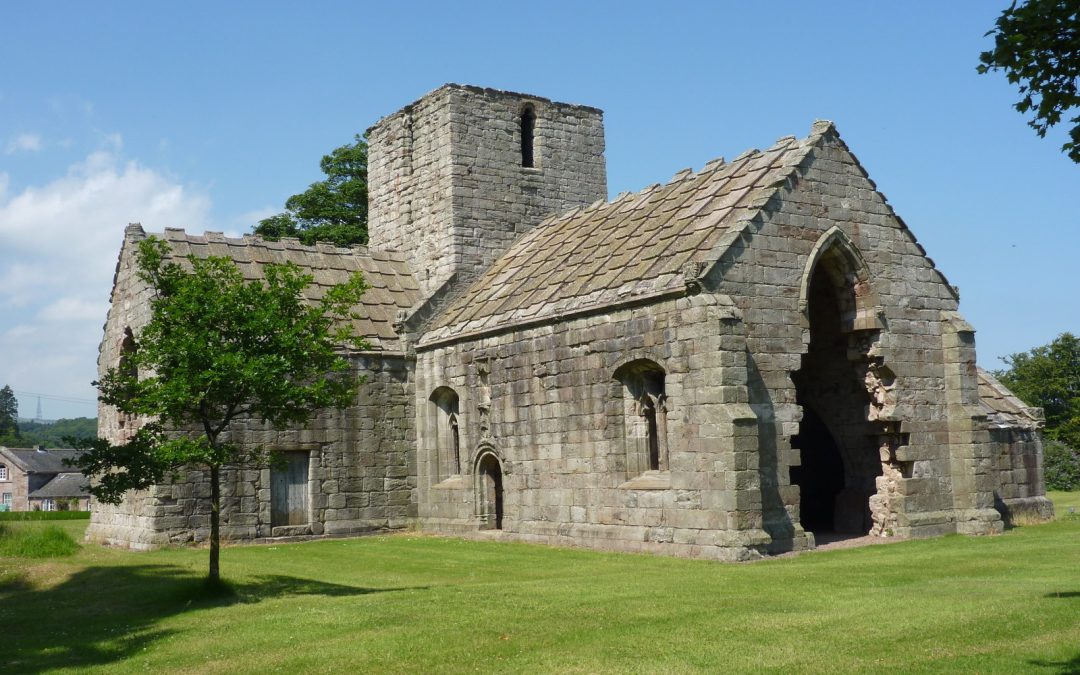Dunglass Collegiate Church is a historic landmark located in East Lothian, Scotland. The church dates back to the 15th century and is known for its impressive architecture and rich history. The church is a popular tourist destination and attracts visitors from all over the world.
The church was originally built as a collegiate church and was home to a community of priests who provided religious services to the local community. Over the years, the church has undergone several renovations and restorations, but it still retains its original charm and character. Today, visitors can explore the church’s stunning architecture and learn about its fascinating history.
If you’re planning a trip to East Lothian, a visit to Dunglass Collegiate Church is a must. Whether you’re interested in history, architecture, or simply want to soak up the tranquil atmosphere, this beautiful church is sure to leave a lasting impression.
History of Dunglass Collegiate Church
Founding and Early Years
Dunglass Collegiate Church is a historic site located in East Lothian. It was founded in the 1400s by Sir Alexander Home, a member of the Home family. The church was originally built as a private chapel for the Home family, but it was later granted collegiate status by James II in 1450. This allowed for the establishment of a college of priests who were responsible for conducting religious services and providing education to the local community.
During its early years, Dunglass Collegiate Church was an important religious and educational institution in East Lothian. It played a significant role in the development of the local community, providing support and guidance to the people of the area.
Reformation and Aftermath
The Reformation had a significant impact on Dunglass Collegiate Church. The church was dissolved in 1560, and its lands and properties were confiscated by the state. The college of priests was disbanded, and the church was left to fall into disrepair.
Despite this, Dunglass Collegiate Church remained an important site of historical and cultural significance. In the centuries that followed, various efforts were made to restore the church and preserve its heritage. Today, it stands as a testament to the rich history and culture of East Lothian.
Architectural Features
Exterior Details
Dunglass Collegiate Church is a remarkable example of Gothic architecture, with its impressive exterior features. The church is built in the shape of a cross, with a nave and transepts. The carved stonework on the exterior is particularly noteworthy, with intricate details on the arches, windows, and doorways. The tower is also an impressive feature, rising high above the surrounding landscape.
Interior Details
The interior of Dunglass Collegiate Church is just as impressive as the exterior. The nave is vaulted with stone-vaulted roofs, adding to the grandeur of the space. The three-seated sedilia is a unique feature, providing seating for the clergy during services. The sacristy is also a notable feature, providing a space for the clergy to prepare for services.
The stone-vaulted roofs continue throughout the transepts, adding to the grandeur of the space. The carved stonework is also present on the interior, with intricate details on the arches and columns. The overall effect is one of grandeur and elegance, making Dunglass Collegiate Church a must-see for anyone interested in Gothic architecture.
Dunglass Estate
The Dunglass Estate is a historic estate located in East Lothian, Scotland. The estate is home to several notable buildings, including Dunglass Castle and Dunglass House.
Dunglass Castle
Dunglass Castle is a ruined castle that dates back to the 15th century. The castle was originally built by the Hall family, who were prominent landowners in the area. The castle was later owned by the Usher family, who made significant additions and renovations to the castle in the 17th century. Today, the castle is a popular tourist attraction and is open to visitors.
Dunglass House
Dunglass House is a Georgian mansion that was built in the early 18th century. The house was originally built for Sir James Hall, a prominent scientist and member of the Hall family. The house was later owned by the Usher family, who made significant renovations to the property. Today, the house is used as a venue for weddings and events.
The Dunglass Estate also includes a stable and barn, which were used for the upkeep of the estate and the horses that were used for transportation. The Hall family, who originally owned the estate, were known for their love of horses and horse racing.
Religious Significance
Role of the Provost
The Provost was the chief administrator of Dunglass Collegiate Church and was responsible for managing the church’s affairs. He was appointed by the founder of the church, the Earl of Home, and was responsible for overseeing the work of the priests, chaplains, and choristers. The Provost also played an important role in the religious life of the church, leading prayers and participating in Mass.
Role of Priests and Chaplains
The priests and chaplains at Dunglass Collegiate Church were responsible for conducting religious services and performing other religious duties. They were also responsible for maintaining the church and its grounds, including the Private Chapel. The priests and chaplains were appointed by the Provost and were expected to be knowledgeable about the teachings of the church.
Role of Choristers
The choristers at Dunglass Collegiate Church were responsible for providing music during religious services. They were trained in singing and music theory and were expected to be able to read music. The choristers were an important part of the church’s religious life, providing a musical accompaniment to Mass and other religious services.
In addition to Mass and other religious services, Dunglass Collegiate Church was also known for its Perpetual Prayers. These were prayers that were said continuously, day and night, by the priests and chaplains of the church. The Perpetual Prayers were said for the souls of the dead and for the welfare of the living.
Visiting Dunglass Collegiate Church
Dunglass Collegiate Church is a historical site located in East Lothian, Scotland. It is a popular destination for visitors who are interested in history and architecture. In this section, we will provide some information on how to get there and what to see.
How to Get There
Dunglass Collegiate Church is located on Main Road in the market town of Cockburnspath. If you are travelling from Edinburgh, you can take the A1 road and follow the signs to Cockburnspath. The site is easily accessible by car, and there is free parking available on site.
If you prefer to use public transport, there are several bus services that run between Edinburgh and Cockburnspath. The journey takes approximately 1 hour and 30 minutes, and the bus stop is a short walk from the church.
What to See
Dunglass Collegiate Church is a beautiful example of medieval architecture. The church was built in the 15th century and was used by the Collegiate Church of Dunglass. It is a unique example of a collegiate church in Scotland.
Visitors to the church can explore the beautiful architecture and learn about the history of the site. The church is open to visitors all year round, and admission is free.
Some of the highlights of the church include the impressive vaulted ceiling, the intricate stone carvings, and the beautiful stained glass windows. Visitors can also see the remains of the church’s cloister and the tomb of Sir John Cockburn, who was one of the founders of the collegiate church.
Dunglass Collegiate Church Today
Weddings at Dunglass
Dunglass Collegiate Church is a popular wedding venue in East Lothian. The church’s stunning architecture and picturesque location make it a popular choice for couples looking for a unique and romantic setting for their special day. The church can accommodate up to 120 guests and offers a range of wedding packages to suit different budgets and requirements. The church’s team of experienced wedding coordinators are on hand to help couples plan every aspect of their wedding, from catering to floral arrangements.
Preservation and Conservation Efforts
Dunglass Collegiate Church is a historic building that dates back to the 15th century. As such, it requires ongoing preservation and conservation efforts to ensure that it remains in good condition for future generations to enjoy. The church’s preservation and conservation team work tirelessly to maintain the building’s structural integrity and to protect its historic features. This includes regular inspections, repairs, and restorations where necessary.
The church is also committed to sustainable and eco-friendly practices. For example, it has installed solar panels to generate renewable energy and has implemented water-saving measures to reduce its environmental impact.
In addition, the church is open to visitors throughout the year, offering guided tours and educational programs to help visitors learn more about its history and significance.
Artistic and Cultural Significance
Statues and Niches
Dunglass Collegiate Church in East Lothian is home to several statues and niches that hold great artistic and cultural significance. The church’s Gothic architecture, dating back to the medieval times, is a testament to the impressive craftsmanship of the time. Visitors can admire the intricate details of the stonework and the beautiful stained glass windows that adorn the church.
The niches in the church contain several statues of religious figures, including the Virgin Mary, St. Peter, and St. Paul. These statues are a testament to the skill of the medieval sculptors who created them. Visitors can appreciate the fine details and the delicate features of the statues, which have stood the test of time.
Knights Templar Crosses
The Knights Templar were a prominent religious order during the medieval times, and their influence can be seen in the architecture and decoration of Dunglass Collegiate Church. The church contains several Knights Templar crosses, which are carved into the stonework and are a symbol of the order’s presence in the area.
These crosses are a testament to the cultural and historical significance of the Knights Templar, who played an important role in the history of the region. Visitors can appreciate the intricate details of the crosses and the skill of the stonemasons who created them.
Grave Markers
Dunglass Collegiate Church is also home to several grave markers, which are a testament to the lives of the people who lived and died in the area. These grave markers are a reminder of the church’s importance as a place of worship and a final resting place for the community.
Visitors can appreciate the simple yet elegant design of the grave markers, which are a reflection of the church’s Gothic architecture. The markers are a reminder of the people who lived in the area during the Wars of the Rough Wooing and the reign of Henry VIII, and their contribution to the history of the region.

